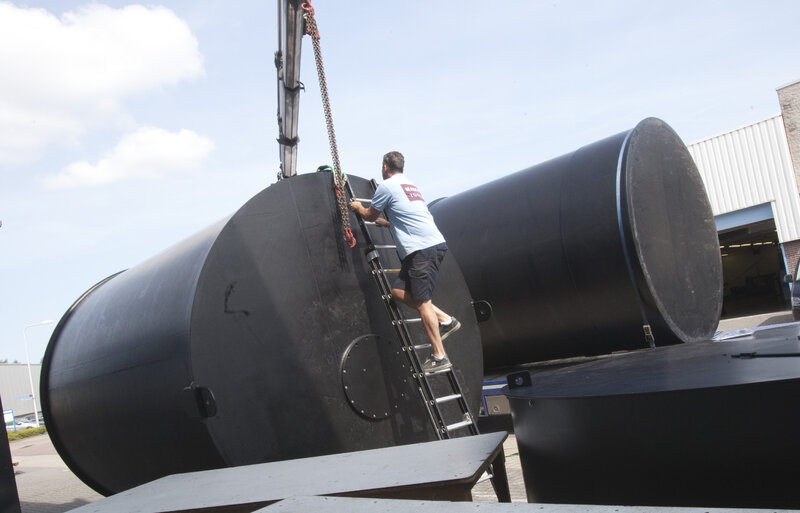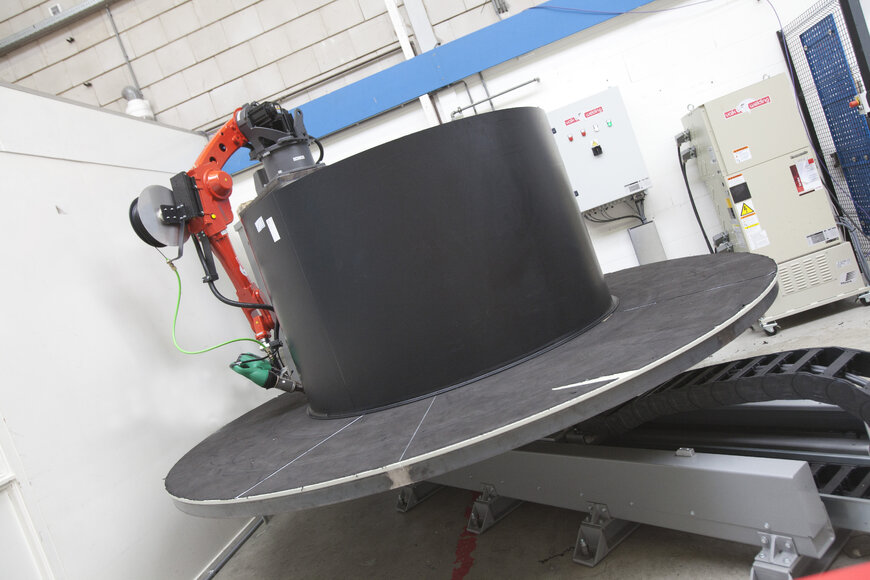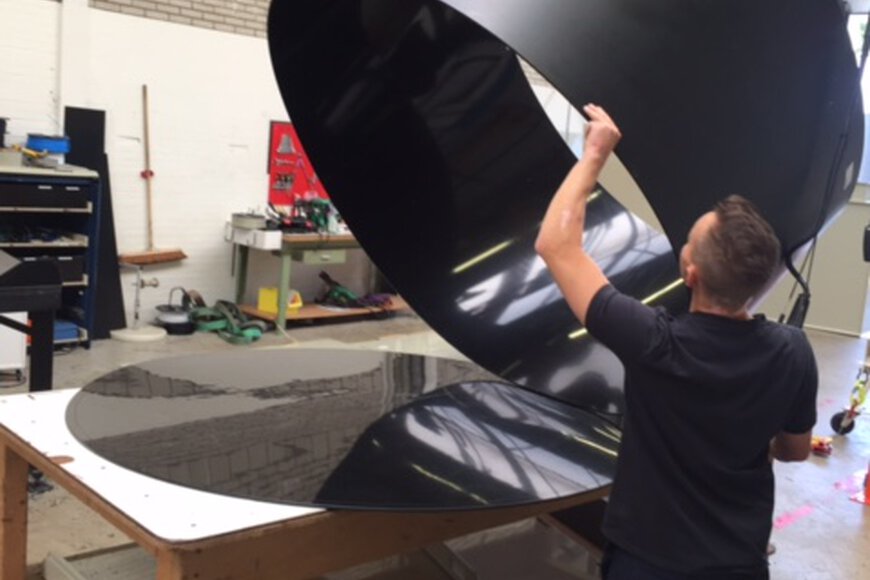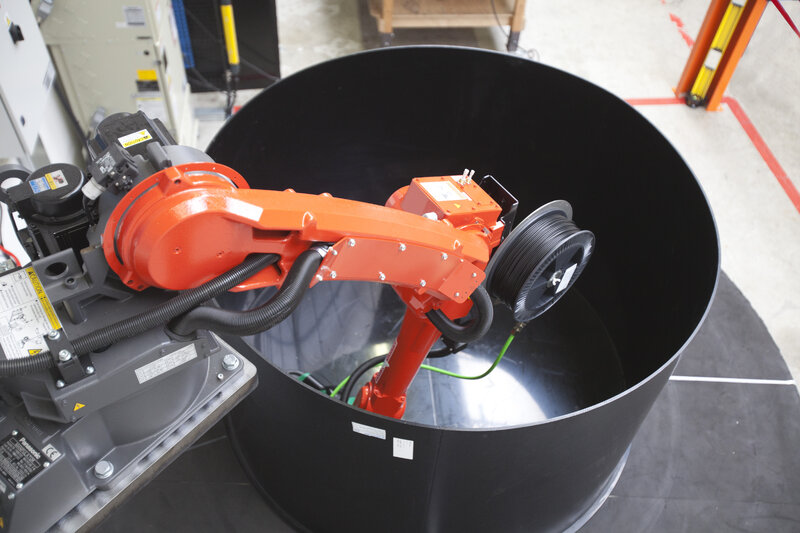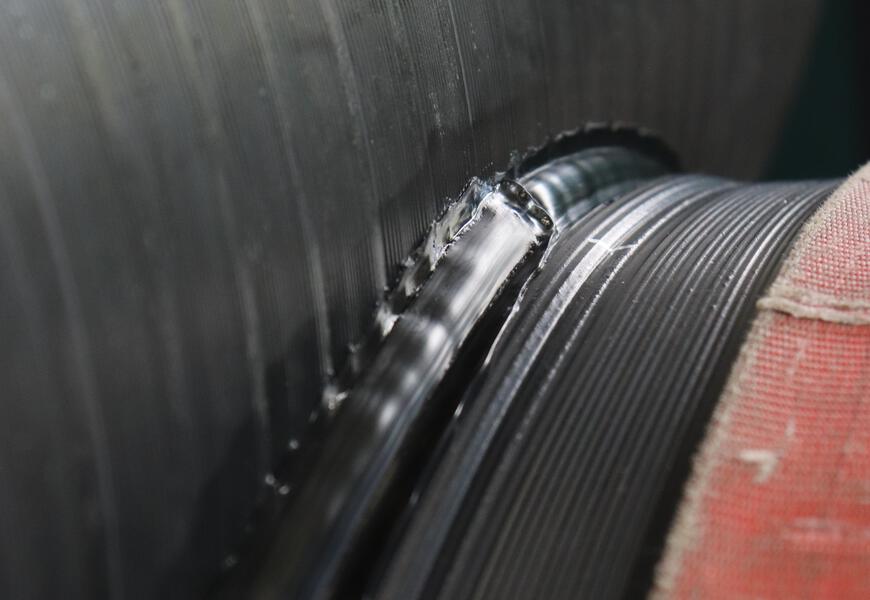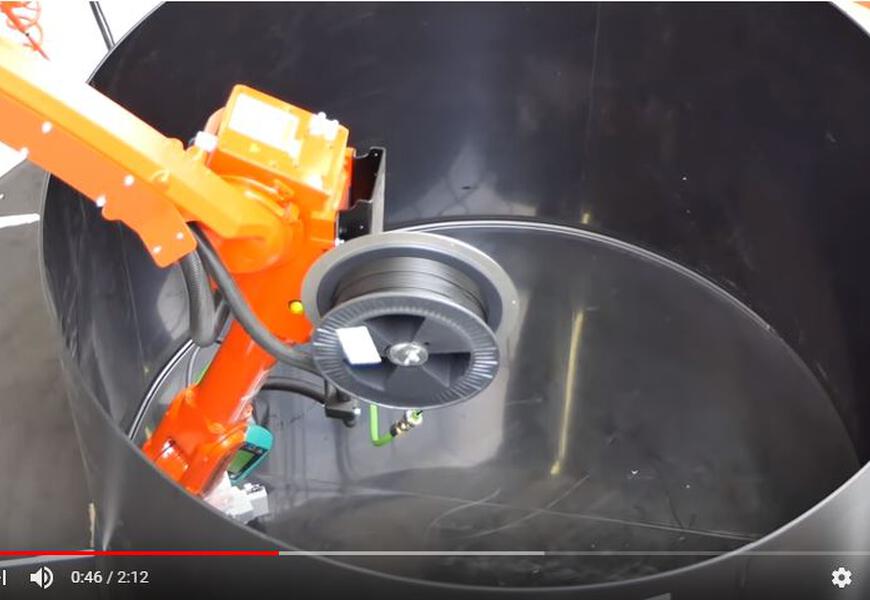Clean process without critical tolerances
In the course of the process, plastic is added from the coil while the extruder heats up the material of both board parts, causing the three elements to form a molecular connection that is particularly strong. Hessel Luiten, who accompanied the entire project as an graduate ‘industrial product designer’ intern and is now responsible for the programming and the entire robot installation, “It is a fully clean process, during which no vapours are released contrary to the welding of metal. Moreover, the tolerances are less critical. As long as the robot presses the extruder in the inclined position in the upright angle, the heating will be sufficient to melt the material. The majority of the knowledge and experience lies in how the dimensional losses that occur as a result of the melting can be compensated.”
Saving on labour costs
The greatest financial gain lies in the savings on labour costs and the ensuring of quality. Robert Kemeling, “The capacity of the production is increased because now a single operator works on two containers simultaneously. Moreover, work is performed in a constant, uninterrupted motion, which ensures high, consistent quality. Furthermore, the continuous handling of an extruder is a heavy load for the specialist.”
www.kemeling.nl

